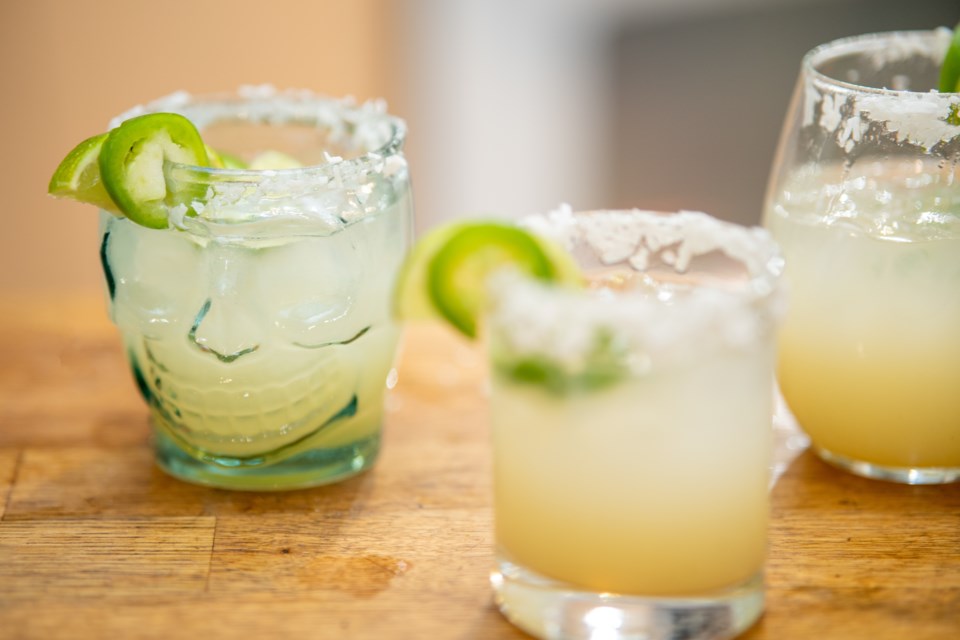With summer underway, many of us are eagerly anticipating the warm sun, sandy beaches, and refreshing cocktails by the pool.
However, amidst the merriment and relaxation, there's a lesser-known risk that deserves attention: the infamous "margarita burn." This peculiar condition, which can occur when lime juice or other citrus fruits come into contact with the skin and sunlight, has been making waves as an emerging summer hazard.
Understanding Margarita Burn:
Margarita burn, also known as phytophotodermatitis or lime disease, is a type of skin irritation that develops when certain plant compounds, known as furocoumarins, interact with ultraviolet (UV) light. This chemical reaction can be triggered by exposure to substances like lime juice, lemons, oranges, and other citrus fruits, especially when combined with sunlight.
Causes and Symptoms:
The primary cause of margarita burn is the interaction between furocoumarins present in citrus fruits and UV light. When these compounds come into contact with the skin, they can lead to an inflammatory reaction, resulting in redness, blistering, and itching. The affected areas usually resemble a burn, hence the term "margarita burn."
It's important to note that this reaction is not limited to margaritas alone. Any situation where citrus juice is splashed onto the skin, combined with sun exposure, can potentially lead to this condition. Activities such as squeezing limes into cocktails, preparing citrus-infused dishes, or simply enjoying a refreshing citrus fruit outdoors can put you at risk.
Some plants that may cause phytophotodermatitis include:
- carrots
- celery
- citrus fruits (most commonly limes)
- figs
- wild dill
- wild parsley
- wild parsnips
- hogweed
Prevention and Protection:
Preventing margarita burn is relatively simple by following a few precautionary measures:
-
Awareness: Educate yourself and your loved ones about the risk of margarita burn. Understand which fruits contain furocoumarins and their potential interaction with sunlight.
-
Hand Washing: After handling citrus fruits or squeezing juice, ensure thorough hand washing to remove any residue from the skin.
-
Sunscreen: Regularly apply a broad-spectrum sunscreen with a high sun protection factor (SPF) to any exposed skin. This includes areas that may have come into contact with citrus juice.
-
Protective Clothing: When handling citrus fruits or engaging in activities that involve contact with lime or lemon juice, consider wearing gloves, long sleeves, and other protective clothing.
-
Shade: Whenever possible, seek shade or create a shaded area to minimize direct exposure to sunlight.
Treatment and Remedies:
If you find yourself affected by margarita burn, here are a few recommended steps for relief:
-
Immediately rinse the affected area with cool water to remove any remaining citrus juice residue.
-
Keep the affected area shielded from sunlight until it has healed to prevent further irritation.
-
Applying soothing and cooling substances like aloe vera gel or over-the-counter hydrocortisone cream can help alleviate redness and itching.
-
In severe cases where blisters have formed or the burn is accompanied by severe pain, it's advisable to seek medical attention for appropriate treatment.
While margarita burn might sound like an unusual and comical summer mishap, it is a real condition that can cause discomfort and inconvenience. By taking a few simple precautions and being mindful of the potential risks, you can enjoy your summer activities without falling victim to this peculiar hazard.
Remember, prevention is key, and a little awareness can go a long way in ensuring a safe and enjoyable summer season. So, stay informed, stay protected, and sip your margaritas responsibly!




